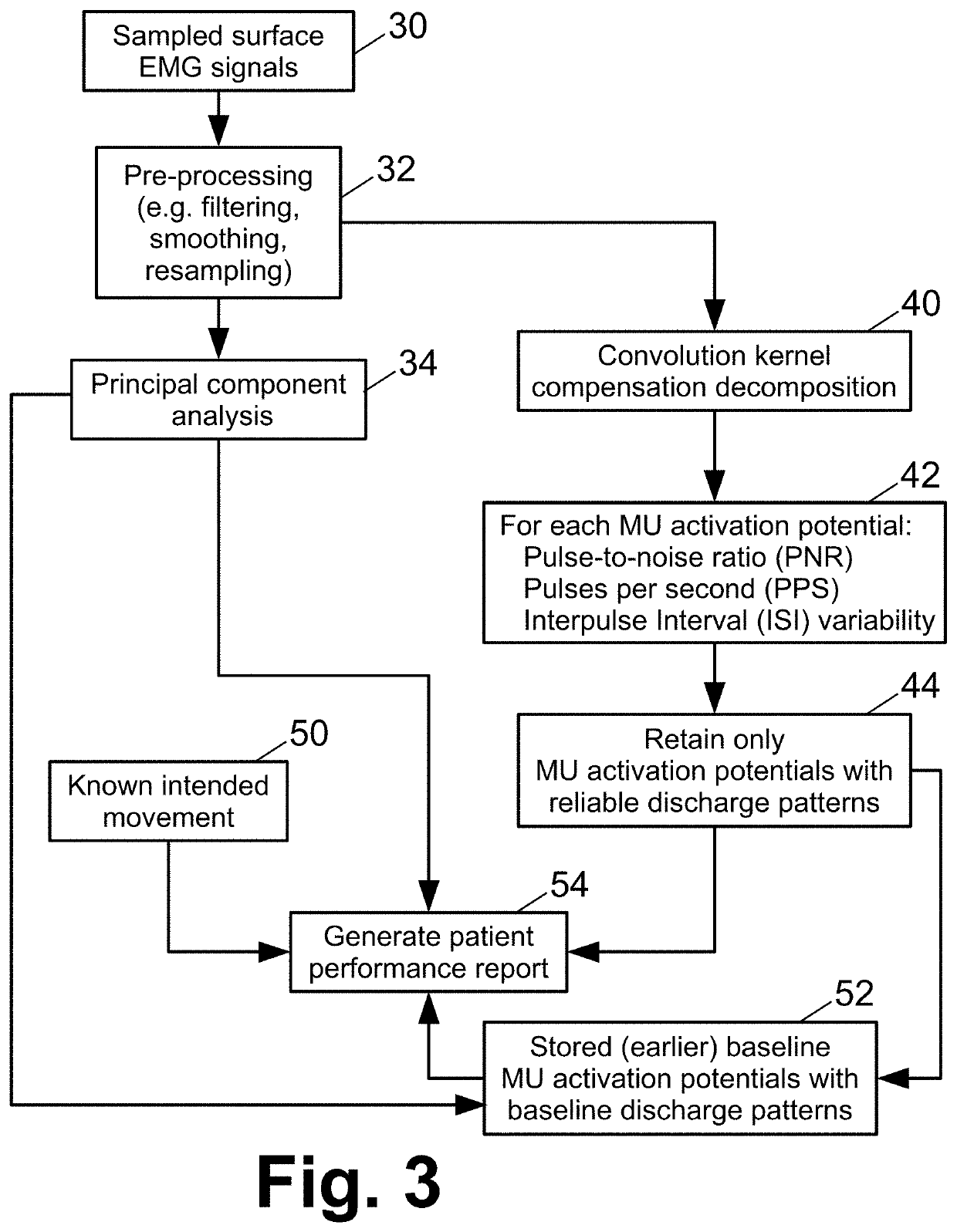Control of functional electrical stimulation using motor unit action potentials
a technology of motor unit action potential and functional electrical stimulation, which is applied in the field of functional electrical stimulation (fes) arts, electromyography (emg) arts, emg controlled fes arts, spinal cord injury (sci) rehabilitation arts, etc., can solve the problem of decoding volitional intent as respecting a specific body part, invasive intracortical electrodes, complex brain electrical activity,
- Summary
- Abstract
- Description
- Claims
- Application Information
AI Technical Summary
Benefits of technology
Problems solved by technology
Method used
Image
Examples
Embodiment Construction
[0014]Another possible approach for measuring volitional intent for driving functional electrical stimulation (FES) is to measure electromyography (EMG) signals at the paralyzed wrist (or other paralyzed body portion). EMG signals are electrical activity produced by skeletal muscles. This approach is premised on the hypothesis that, in spite of the SCI or cause of the paralysis, the patient's volitional intent still generates neural signals to the muscles of the paralyzed body portion, albeit at insufficient strength to stimulate functional muscle contraction. The likelihood of this hypothesis is arguably greater in the case of a stroke patient as compared with an SCI patient; however, experiments have demonstrated that the hypothesis holds for some SCI patients.
[0015]However, employing EMG signals for volitional FES control is challenging. If EMG signals are present at all in the paralyzed body part, they are expected to be greatly attenuated compared with EMG signals in a healthy ...
PUM
 Login to View More
Login to View More Abstract
Description
Claims
Application Information
 Login to View More
Login to View More - R&D
- Intellectual Property
- Life Sciences
- Materials
- Tech Scout
- Unparalleled Data Quality
- Higher Quality Content
- 60% Fewer Hallucinations
Browse by: Latest US Patents, China's latest patents, Technical Efficacy Thesaurus, Application Domain, Technology Topic, Popular Technical Reports.
© 2025 PatSnap. All rights reserved.Legal|Privacy policy|Modern Slavery Act Transparency Statement|Sitemap|About US| Contact US: help@patsnap.com



